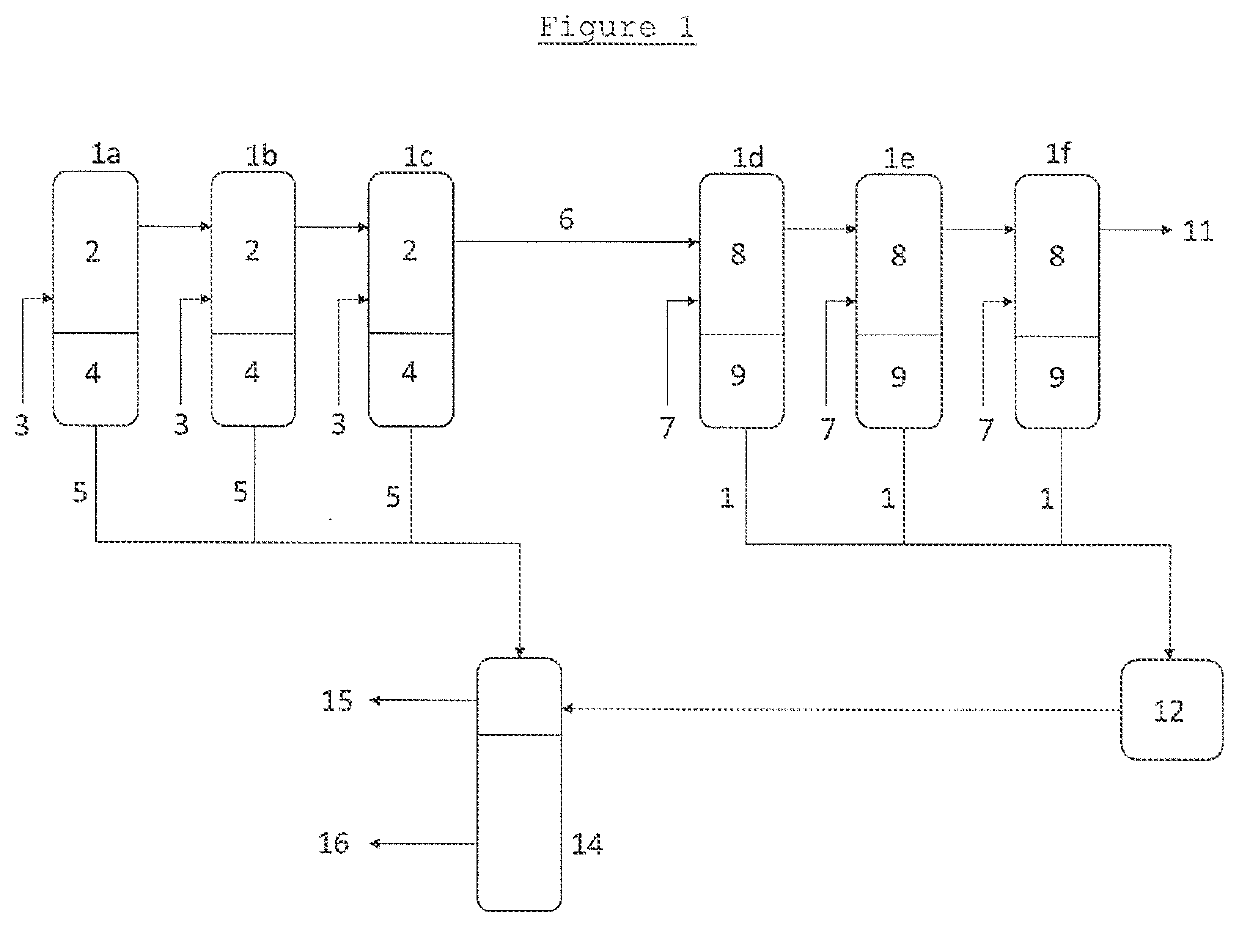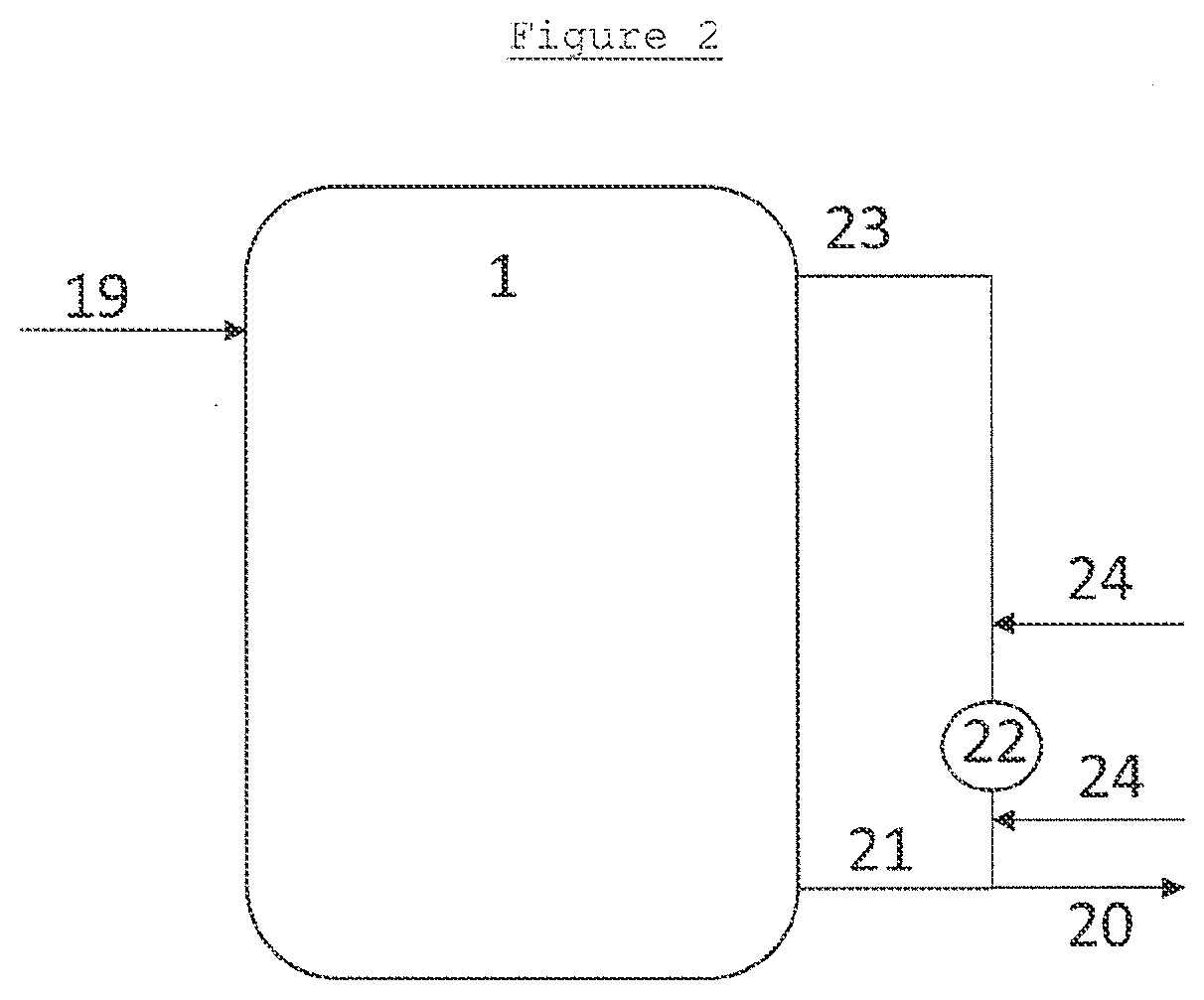Process for removing contaminants from crude oil
- Summary
- Abstract
- Description
- Claims
- Application Information
AI Technical Summary
Benefits of technology
Problems solved by technology
Method used
Image
Examples
example 1
[0065]A sample volume of Urals crude oil was contacted with equal volumes of an organic solvent stream comprising dry NMP solvent in 4 consecutive stages at ambient temperature and ambient pressure in a glass funnel with bottom draining valve.
[0066]In each stage, the organic solvent stream was added to the crude oil, mixed thoroughly and left to settle, forming an organic solvent bottom phase, which was then drained off, leaving the remaining crude oil in the vessel. The remaining crude oil from each stage was sampled for analysis. Organic chloride concentrations in the original crude oil sample and the remaining crude oil after the 1st and 4th stage were analysed and are reported in Table 1 below.
[0067]It has been clearly shown that contaminants comprising organic chlorides are effectively removed from crude oil using a series of solvent washes.
TABLE 1Remaining crudeRemaining crudeCrudeoil after 1stoil after 4thSampleoilstagestageDichloromethane(ppmw)Trichloromethane2.10.2(ppmw)Tet...
example 2
[0068]A sample volume of Urals crude oil in a glass vessel was contacted with half its volume of an organic solvent stream comprising dry NMP solvent. The mixture was left to settle, forming an organic solvent bottom phase, which was then drained off, leaving the remaining crude oil in the vessel. Subsequently, the remaining crude oil volume was contacted with half its volume of an aqueous stream. The mixture was then left to settle, forming an aqueous bottom phase.
[0069]In this example both dry NMP solvent and aqueous solvent were introduced into the glass vessel by dripping droplets through a plate with holes at ambient temperature and ambient pressure.
[0070]Samples were taken from a sampling point in the glass vessel during contacting and after phases have settled. The samples were analysed for concentration of organic chlorides and NMP and the results are reported in Table 2 below.
TABLE 2Crude oilRemaining crudeRemaining crudebeforeoil after NMPoil after aqueousSampleprocesssolv...
PUM
 Login to View More
Login to View More Abstract
Description
Claims
Application Information
 Login to View More
Login to View More - R&D Engineer
- R&D Manager
- IP Professional
- Industry Leading Data Capabilities
- Powerful AI technology
- Patent DNA Extraction
Browse by: Latest US Patents, China's latest patents, Technical Efficacy Thesaurus, Application Domain, Technology Topic, Popular Technical Reports.
© 2024 PatSnap. All rights reserved.Legal|Privacy policy|Modern Slavery Act Transparency Statement|Sitemap|About US| Contact US: help@patsnap.com









